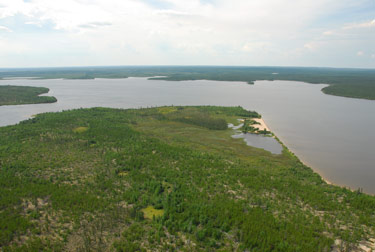Sand Lakes Provincial Park
Northeast Parks

Established in 1995, Sand Lakes Provincial Park occupies 8310 km2 of the northern Manitoba landscape. This wilderness park features several outstanding water bodies including the South Seal River and the 113 km long Big Sand Lake which lends its name to the park. The park is representative of the Selwyn Lake Upland and Churchill River Upland Ecoregions and is a transition from the boreal forest to tundra. As with many other parks in the region, dramatic eskers and bedrock outcrops dot the landscape. Sand Lakes Provincial Park provides habitat for many northern species of wildlife including black bear, moose, wolves, waterfowl and shorebirds. The park protects part of the migratory range and travel corridors of the barren-ground caribou. Several bird species which are listed as species of conservation concern use the park as breeding or migratory grounds.
The South Seal River canoe route starts at the southwest tip of the park and travels though Big Sand Lake, Loon Lake and Chipewyan Lake before it exits the park and continues on to the Seal River (a designated Canadian Heritage River). The park is designated for wilderness camping; there are no designated campgrounds and backcountry visitors at sites that show previous signs of use when ever possible.
Where to Stay
As there are no designated campgrounds, visitors are expected to camp at an existing site, which is usually marked by a primitive fire ring.
Park Directions
There is no direct road access into the park. To fly into Sand Lakes, arrangements can be made with lodges, outfitters, or air charter companies.
Resources


